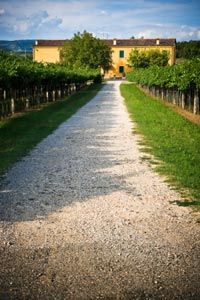Italy is widely recognized as a top tier wine producer and Veneto, one of the nation's wine regions, is a great attribute. The region produces many DOC, or denominazione di origine controllata, wines and plays an important role in the entire country's wine industry [source: Veneto Chamber of Commerce]. Within Veneto, a region that begins on the edge of Lake Garda, there are seven provinces that distinguish the different areas:
- Belluno
- Treviso
- Venezia
- Verona
- Vicenze
- Padova
- Rovigo [source: Cellar Tours]
Veneto and its provinces have made a name for the region throughout the Italian wine industry, but what exactly makes it so special? Many feel that the conditions for planting grapes are ideal, and that size and variations of the region let Veneto produce a wide variety of wines. These are both important elements for any area trying its hand at viticulture, but the advantage presented by having the port city of Venice shouldn't be ignored.
Advertisement
Venice, the city of love, is Veneto's most famous asset. The coastal city has had access to the rest of the Mediterranean, Africa, and even Asia as long as travel has been an option. This access to the world has proven very beneficial throughout the region's history. Easy access to trade led to a thriving economy. With money came an appreciation for finely crafted things and a willingness to pay more for them. Veneto wineries were only too happy to oblige and the quality of winemaking within the region quickly became the highest and most state-of-the-art on the planet.
Beyond Venice, the climate of Veneto has made wine production low maintenance, nurturing grape vines with ease. The size of the region and its differing conditions from border to border allow for nearly every type of grape to grow in a climate seemingly tailored to its needs. That's why the region is able to produce such a wide spectrum of wines.
Advertisement

